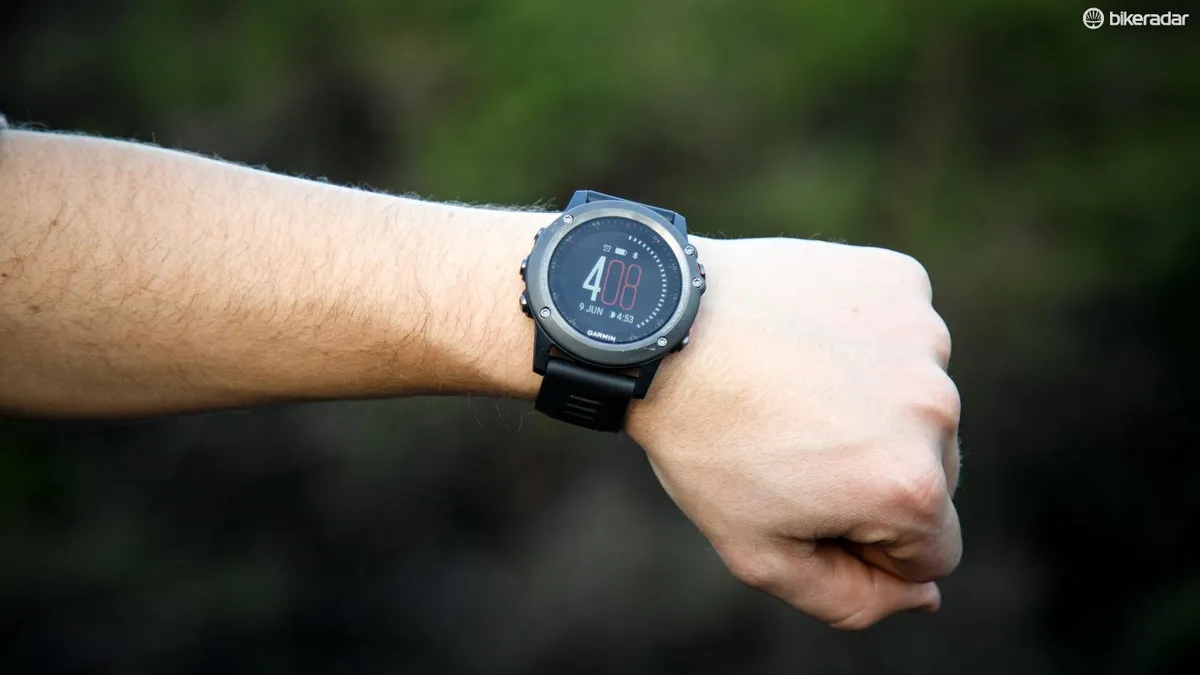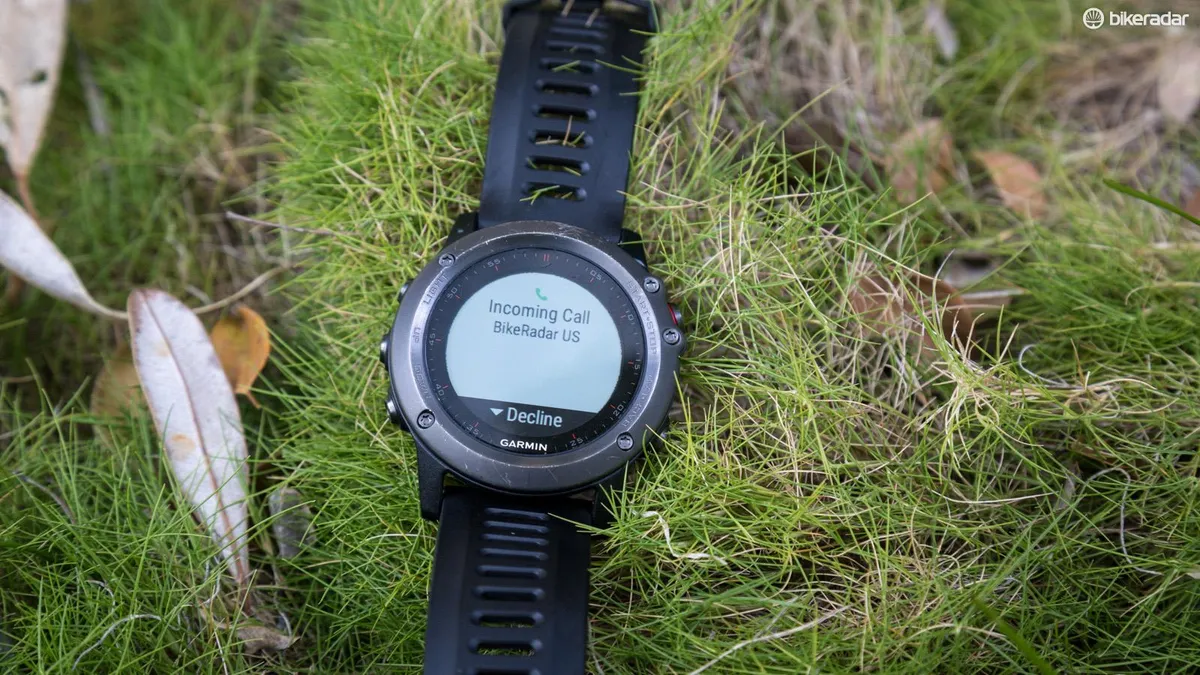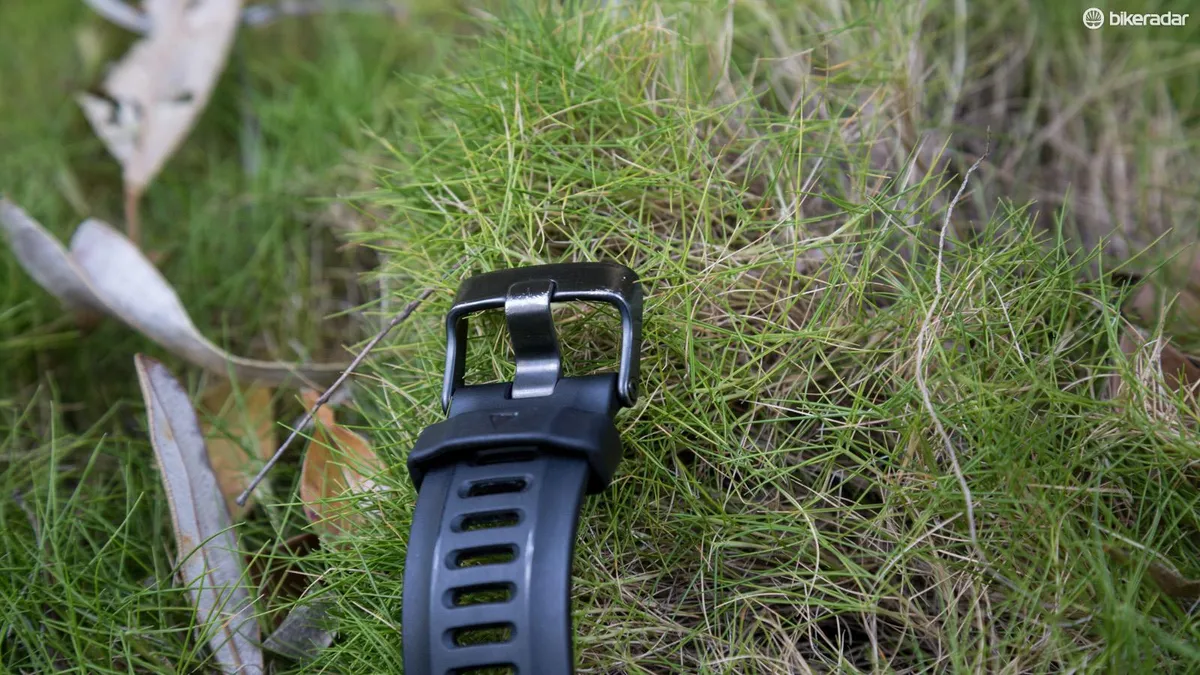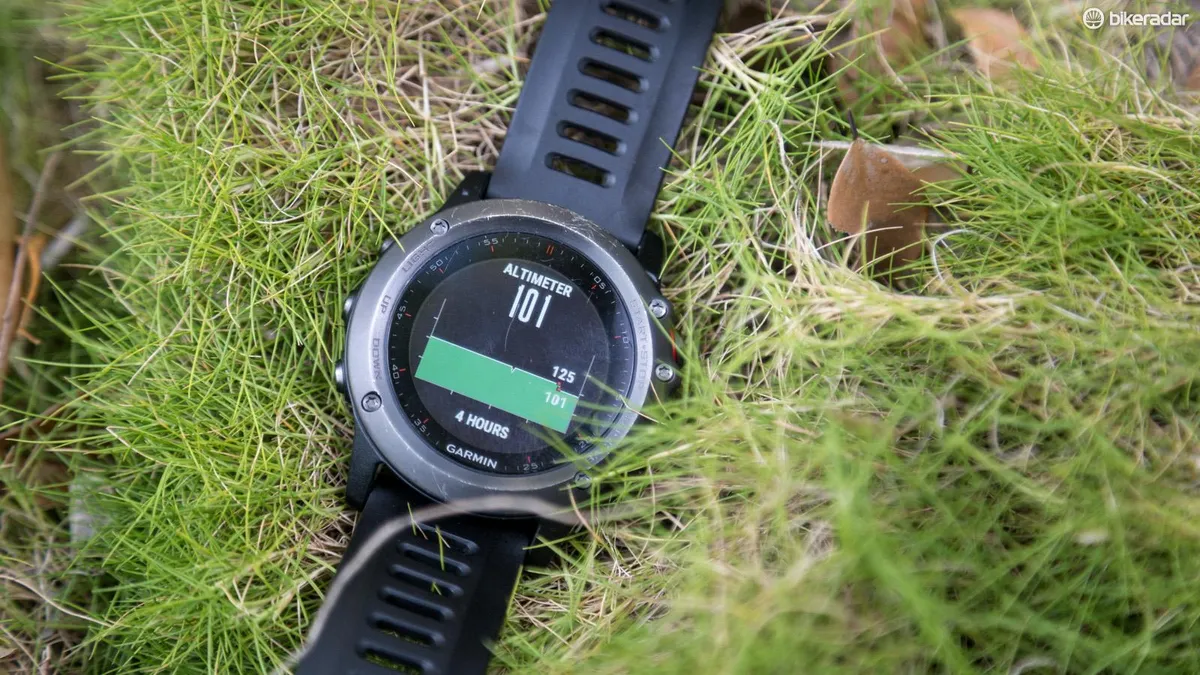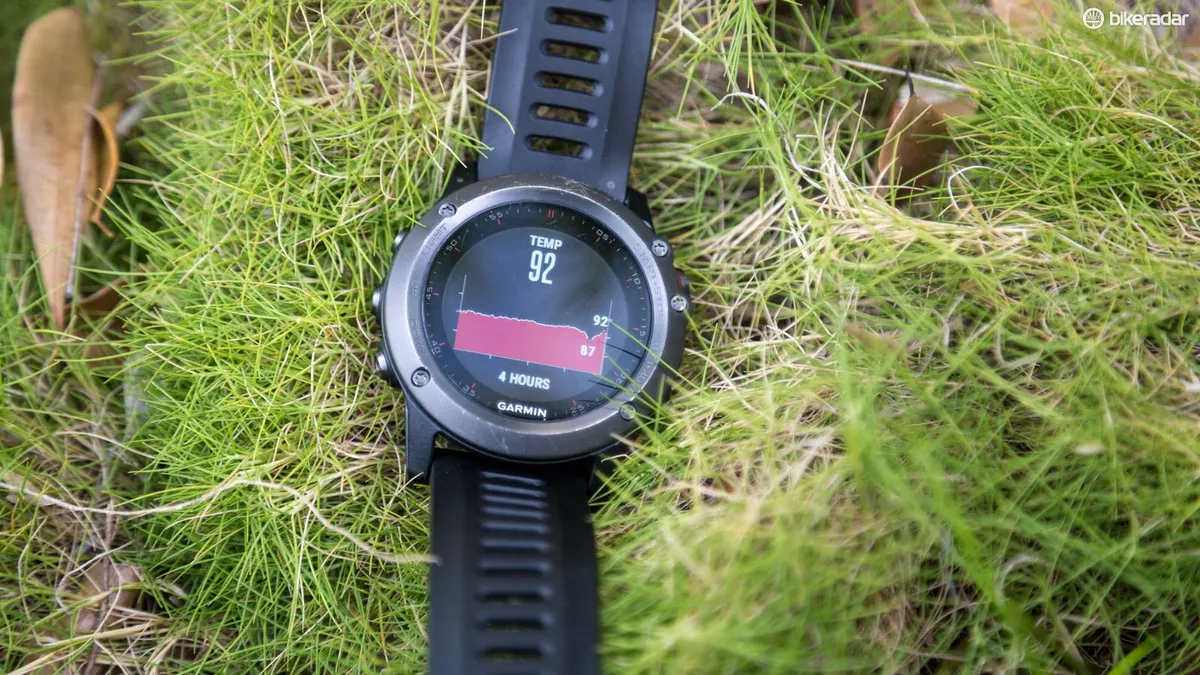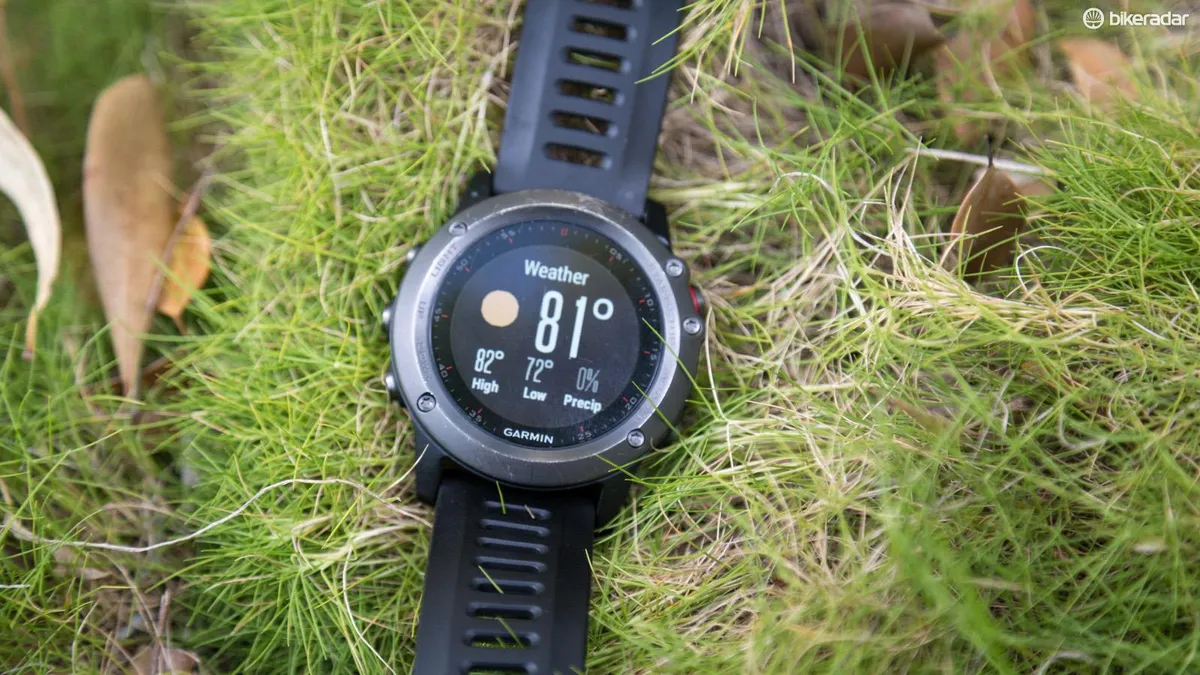Garmin's Fenix 3 is an extremely versatile multisport watch. The durable device can be used to record data from activities ranging from cycling and running, to mountaineering and skiing.
In fact, on top of its vast range of data fields, Bluetooth connectivity and numerous built-in sensors, the Fenix 3 has us contemplating ditching our trusty Edge 500 computer.
Our sample Fenix 3 is the standard version with rubber wrist strap. There are also Sapphire, HRM and Titanium versions, which feature a scratch-resistant sapphire lens, additional band options and one version includes Garmin’s built-in Elevate wrist-based heart-rate technology.
As we already own a range of Garmin branded ANT+ heart rate straps and sensors, our test sample was the watch-only version. Also available is a performer bundle that includes the HRM Run heart rate strap.
The rubber strap is flexible, quite comfortable and replaceable with a few Torx screws. Over the Fenix 2, the edges on the clasp have been rounded and don’t eat your wrist.
Buttons not touchscreen
Opting against the current trend in touchscreen everything, the Fenix 3 is controlled by five buttons situated around the stainless steel bezel, so there’s no need to take your gloves off to start or stop your ride.
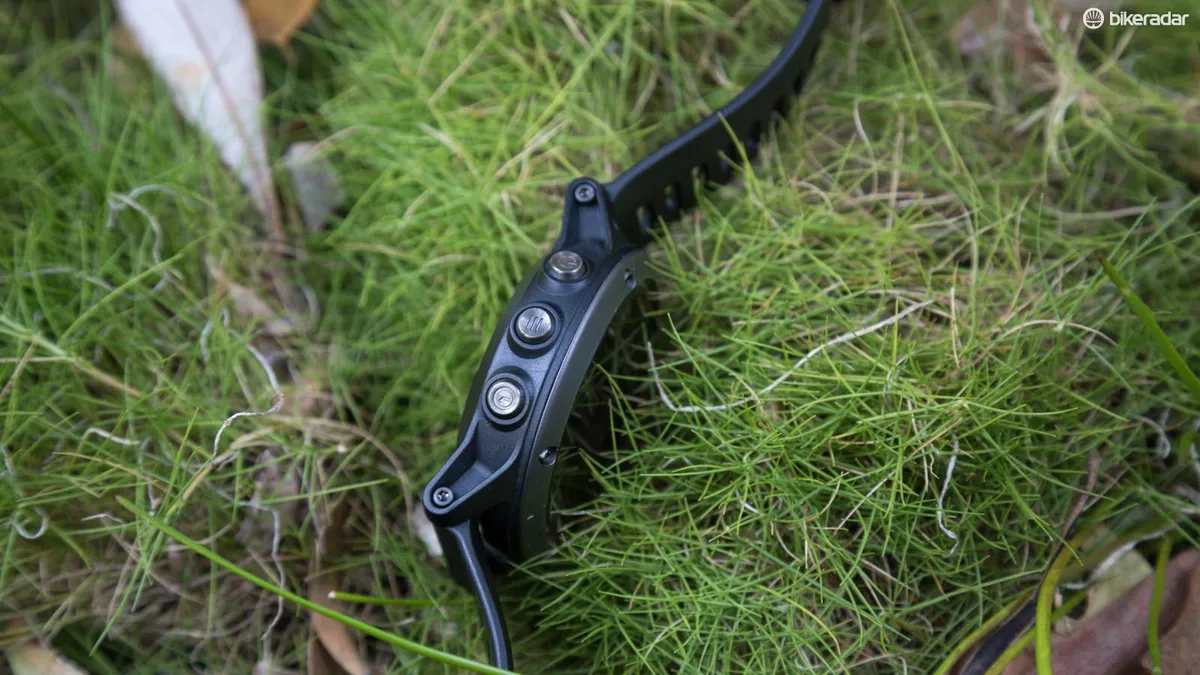
Weighing 84g, the Fenix 3 is no lightweight, especially when you compare it with the 38g Garmin VivoActive smart watch or 57g Edge 500. Thankfully, it’s not quite heavy enough to notice it on your wrist.
We have been using the Fenix 3 as a replacement for our everyday watches and we can say with full authority that it’s a rugged unit. It’s survived everything from our daily rides, to surfing, skiing, rock climbing and canyoning, with no signs of wear and has been dubbed by one tester “a Ron Swanson-approved version of an Apple Watch”.
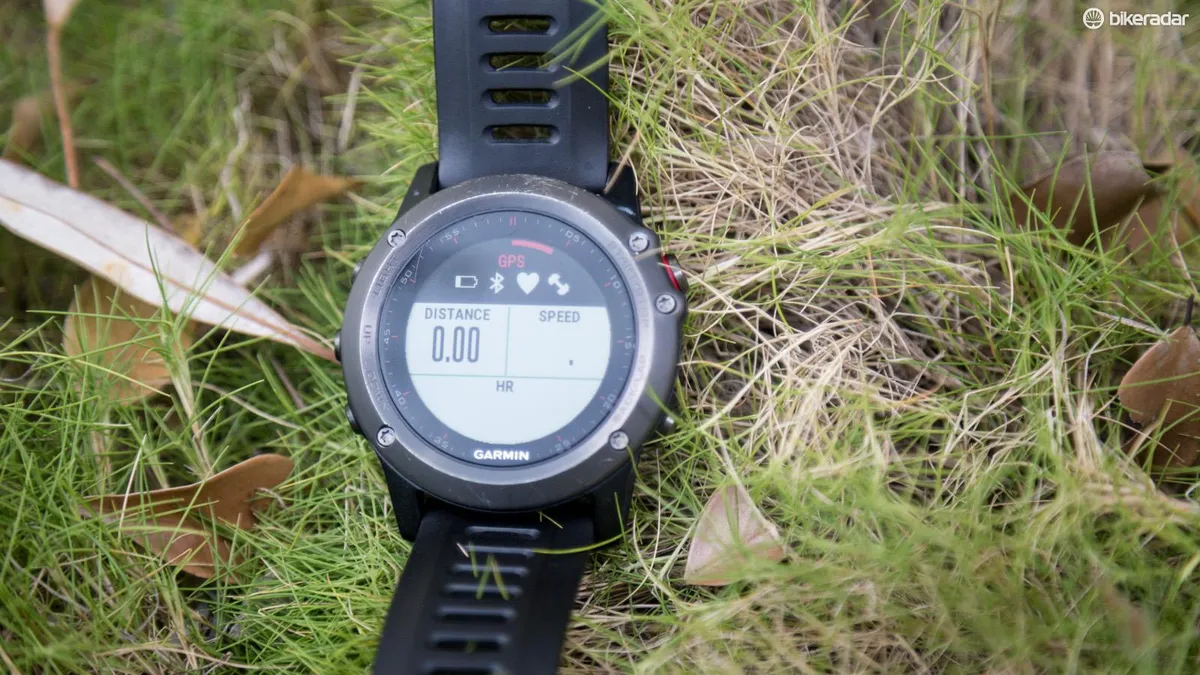
While it’s a rugged unit no doubt, our own Josh Patterson did manage to kill a test unit on a Scuba trip at 80ft / 24m down — despite its 328ft / 100m rating. While this may have just been a faulty unit, I've had no trouble with water — though to be fair I've only delved as deep as the bottom of a 10ft / 3m swimming pool.
The basis of the Fenix 3 is its GPS capabilities. Like any other GPS enabled cycling head unit, as long as there’s a signal the watch can track your location. The Fenix can also tap into the GLONASS network for ultimate accuracy, especially when GPS coverage can be spotty.
With the ability to sync to your Bluetooth 4.0 equipped iPhones and Androids, the Fenix 3 can display notifications from your phone, download apps, widgets data fields and watch faces as well as firmware updates on the fly.
The Bluetooth connectivity also allows for the Fenix 3, with the help of the Garmin Connect app, to automatically upload activities to Strava, as well as track things like steps and sleep patterns. There’s also a nifty ‘find my phone’ feature, which not only brings up an avalanche beacon style tracking system, but also triggers an alarm on your device.
The full-colour, daylight-visible 218 x 218 pixel screen is sharp as a tack and allows the watch to display brightly coloured metrics and watch faces, including one graced by Homer Simpson.
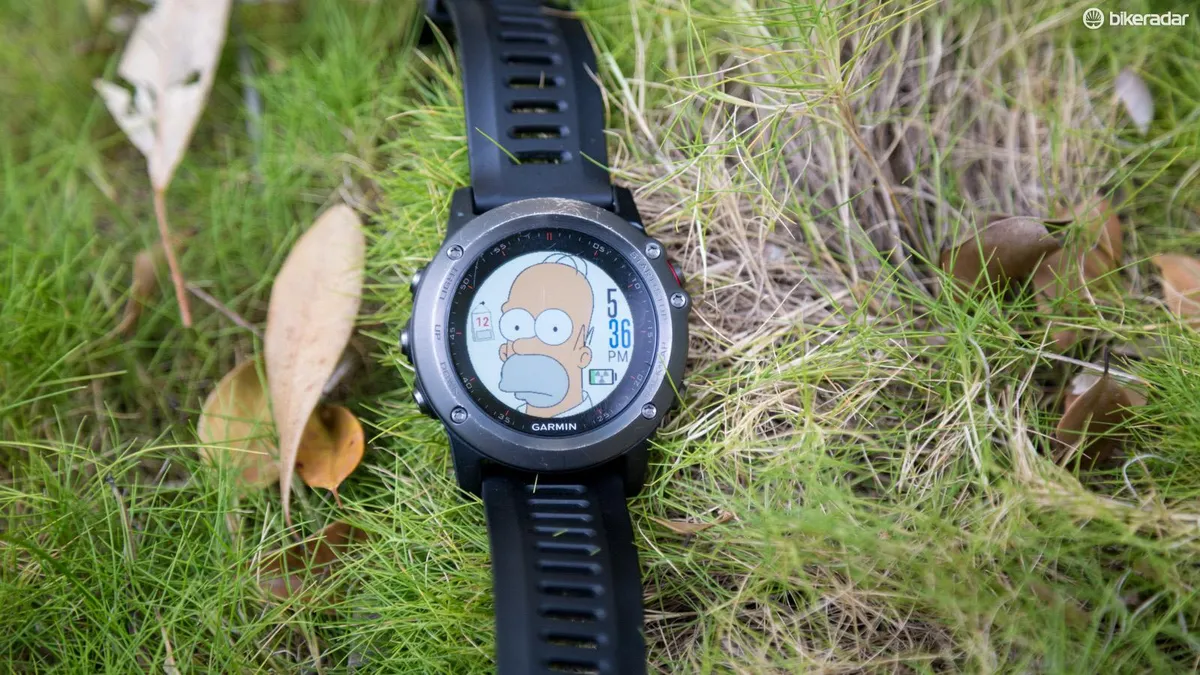
Powered by a rechargeable lithium-ion battery, Garmin claims the Fenix 3 will last up to 50 hours in ‘UltraTrac’ mode, up to 20 hours in GPS training mode and up to six weeks in watch mode. Charging is taken care of via a proprietary plug we like to call the ‘Garmin claw’. This unique plug grabs the outside of the bezel and lines up the charging port.
Bike-friendly features
Initially we tested the Fenix 3’s accuracy against our benchmark Edge 500 unit and, as we expected, the units provided the same results both in speed and total distance.
Running GPS and GLONASS together is heavy on the battery, each ride taking a serious chunk out of the charge. That said, actual battery life is inline with the claimed 20-hours in GPS training mode. To combat constantly needing to charge the unit, we used the UltraTrac mode for the majority of our testing.
To save battery power, the GPS tracking is periodically turned off in UltraTrac mode with the watch relying on the built in accelerometer to calculate speed and distance — although it doesn't cut out data from ANT+ sensors like the Fenix 2.

The accuracy is still pretty good in UltraTrac mode, though it’s not perfect; according to Strava, we clocked a speed of 70mph/112.7kph down a particularly rough descent when we began testing the UltraTrac function. While it seems to be an isolated incident, we can’t help but wonder if the shaking of the watch tricked the accelerometer. Other than that, the Fenix 3 matched the accuracy of our benchmark Edge 500 unit.
Using the breadcrumb style navigation, similar to that on the Edge 500, you can create and mark up to 1,000 locations and 10,000 track points, such as a start/finish line, course checkpoint, and use the Fenix 3 to follow the course. That said, this function is much more useful off the bike because riding down the road trying to look at your watch is rather dangerous.
Unlike many wearables in this category, the Fenix 3 features a built-in compass, altimeter and barometer. These enable the watch to give accurate readings of heading, altitude and air pressure rather than piggybacking your phone via the Bluetooth connection. Why’s this useful on the bike, you ask? With these built in sensors, the Fenix 3 can pick up on quick changes in air pressure and set off a storm alarm to let you know the weather is about to change among other things.

Also like any other Garmin head unit, the Fenix 3 offers menus upon menus of metrics from speed, heart rate and grade, to more technical measures like power and a VO2 max estimator. Each different activity (Run, Bike, Ski, Swim etc) are called apps and are fully customisable with up to 10 pages of metrics each.
Not only can you pick and choose which metrics are displayed, but also whether the screen is white or black and the accent colour. Unless you select the ‘time of day’ data field, however, you won’t be able to find the time easily — slightly ironic for a watch.
Additional data screens and metrics can be downloaded for free from Connect IQ. These include everything from visual heart rate zones and graphic elevation to things like beers earned and animal speed.
Fenix 3 connectivity
While the Fenix 3 is ANT+ enabled as you would expect, it seems the Bluetooth connection is only designed for connectivity with your phone. The only mention of Bluetooth in the user manual is in relation to a smartphone connection and we weren’t able to pair the watch with any Bluetooth sensors.
Despite those Bluetooth woes, we were able to connect the unit to a Stages power meter (using ANT+) with no troubles.
Speaking of smartphone connectivity, initially we dreaded having the watch buzz every time our phones did, especially out riding. We usually don’t check our phones on rides, but the Fenix 3 made it easy to screen calls and decide whether they were worth stopping for.
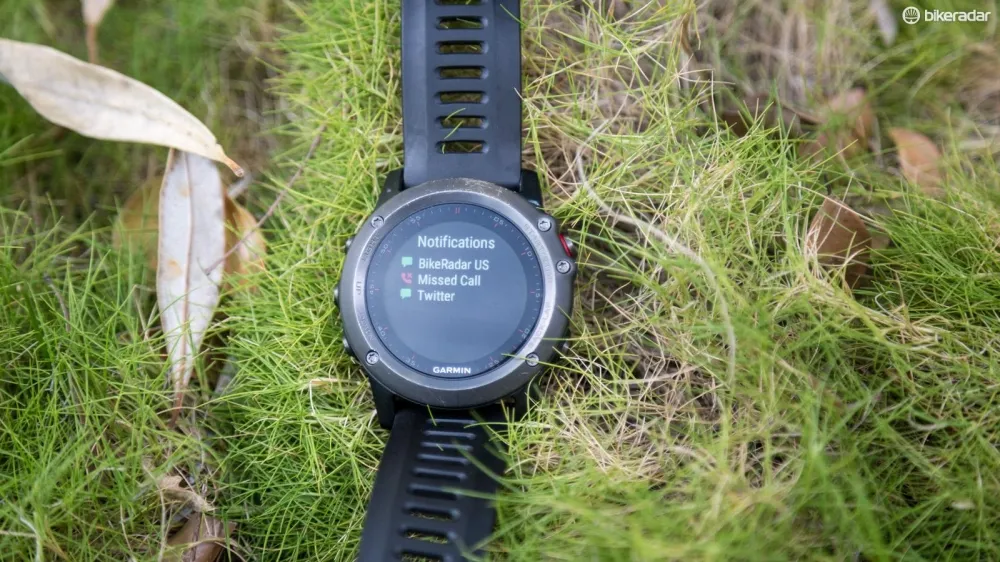
However, there's an apparent lack of consistency around the apps you get notifications from — as well as the obvious risk of drowning in reminders. For example, the Fenix 3 displayed notifications from Gmail, but not the Mail app on an Android phone. We also got plenty of Facebook and Twitter notifications, and have since limited it to just calls and texts.
One tester who’s terrible about uploading rides to Strava from his Edge 500 (only doing so in bulk when a charge was crucial) got quite a surprise after getting a couple of Kudos on his initial ride with the Fenix 3 before he’d changed out of his chamois. Through the Bluetooth connection on your paired smartphone, as soon as the activity is saved it can be set to upload to Garmin Connect and onto Strava.
If you haven’t got a smartphone, you can sync the watch to your home Wi-Fi network to do the same, or barring that plug the unit into your computer (gasp).
Fenix 3 vs. Fenix 2
The Garmin Fenix 3 watches carry a hefty price tag, one that may deter some potential users. While the Fenix 3 is a great unit, it’s older cousin the Fenix 2 is still a solid performer. It's been discontinued with the advent of the Fenix 3, but there are still a few floating around for a good price.
No you don’t get whiz-bang features like WiFi, GLONASS or a colour screen and it’s only waterproof to 50m instead of 100m; but you still get full ANT+ compatibility (including power), GPS, plenty of multisport profiles, access to Garmin Connect (and the Connect IQ store) and a built-in altimeter, barometer and compass.
Fenix 3 vs. Fenix 3 Sapphire/Fenix 3 HR
To be frank, we can't see much difference between these two versions of the Fenix. Yes you get a Sapphire scratch-resistant screen and a built in heart rate monitor, but the firmware is identical.
Only the Fenix 3 HR receives Garmin’s wrist based Elevate wrist based infrared heart rate sensor.
The sensor, which determines heart rate by reading how much blood is flowing beneath your skin using an infrared light, runs 24/7, and as you can imagine that has an effect on battery life. The Fenix 3 HR is claimed to manage up to 40 hours of battery life in UltraTrac mode, 16 hours in GPS training mode, three weeks in watch mode and two weeks in smartwatch mode. For comparison, the current Fenix 3 will last up to 50 hours in ‘UltraTrac’ mode, up to 20 hours in GPS training mode and up to six weeks in watch mode.
Fenix 3 vs. Forerunner 920XT
Even though their feature set is extremely similar, the Fenix 3 and Forerunner 920XT are two very different watches; the first aimed at the adventurer and the latter at the multisport endurance athlete. For those whose gear closets don’t contain six pairs of skis, two surfboards, frame packs ranging from 60l to 105l and more climbing gear than you can shake a rope at, the Forerunner 920 is probably more than enough.

It has all the metrics and endurance multisport modes even the most tri-curious among us could need without the added clutter and features of the Fenix many won’t bother with. It’s also lighter (62g) and cheaper ($500 / £390 / AU$650).
- Related: Garmin Forerunner 920XT review
Fenix 3 vs. VivoActive
The VivoActive falls more into the the fitness tracking smartwatch category. It’s smart looking, feathery light (38g) and provides enough metrics to serve as a cycling head unit (no power), but lacks the durability and built-in sensors of the Fenix — and it's touchscreen.
- Related: Garmin VivoActive review
Conclusion: Brilliant, but not for everyone
While the Fenix 3 is pretty much the ultimate outdoor watch, it's not perfect. As the sealed charging port is located on the underside of the face, we’re a bit worried about corrosion due to constant exposure to sweat. One of our initial complaints was the lack of a built in heart-rate monitor. Garmin does have the Elevate wrist-based heart-rate version and as this technology was available long before the Fenix 3’s initial release we can’t help but feel a bit jibbed. That said, the trade off for the infrared heart rate sensor is reduced battery life and a much lighter wallet.
We also can’t understand including low energy Bluetooth, but not allowing for use with Bluetooth enabled sensors — it’s just plain annoying. You also can’t turn off the Bluetooth connection notification, so whenever you run to the bathroom without your phone, your watch buzzes twice to tell you it’s lost the connection and then reconnected.

Also announced with the additions to the Fenix 3 range is a new firmware update, which as it stands does not offer much for cyclists. Runners get a new lactate threshold test and multiple additional metrics, golfers get a score card and SUP’ers get an app, but we see no additions for cycling other than a 'Last Ride' widget. As firmware updates come in fast and furious we’re hoping this will be rectified soon enough.
It’s also quite a big watch and for those with little wrists it may be a bit much, the dimensions being 2 x 2 x 0.6in / 51 x 51 x 16mm. While it’s absolutely a different beast, the more civilized VivoActive is probably best for more petite users.
Also, as with every watch that claims a temperature reading, it's significantly influenced by body heat. In the cold, if you’re wearing the watch outside a jacket or on top of an arm warmer the temperature will be somewhat accurate, but if it’s touching your skin all bets are off.
Then there’s the price, which is a serious chunk of change.
That said, if your ever expanding gear closet strays far beyond just n+1, the Fenix 3’s range of uses and durability make it worth considering — it’ll probably last longer than any competing head unit or smartwatch.
